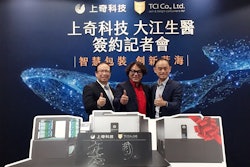
Francois Martin, Senior Communication Advisor at Bobst, spoke at Digital Print for Packaging in Berlin about how the entire packaging workflow needs to be automated for optimization. Martin said that digital print for packaging should, in reality, be digital “production” for packaging, and that all steps of the process should be automated, not just printing.
Currently brand owners and retailers are driving (and financing) operations, said Martin, while converters, packers, software vendors and equipment suppliers are secondary players to the process – providing what is needed and trying to satisfy the customer by meeting demands for faster turnaround, etc.
“Packaging manufacturers of equipment are talking with converters. Converters are talking with brand owners, but they also talk to packers, packers talk to retailers, retailers talk back to brand owners. Consumers talk to everybody. Everybody talks to everybody,” said Martin. Because the process is not well-orchestrated, and uses different formats, it is complicated and time consuming, generating errors and unnecessary costs, as well as waste. “To be more agile,” said Martin, “you look at the entire supply chain.”
Agility and sustainability are “the two things that 4.0 should do in packaging,” said Martin. And while he agreed that more should be done for sustainability – particularly around the overuse of unnecessary plastics – he focused on agility during his presentation and said that the packaging industry should look to “lean thinking” in the same way the automotive industry adopted lean manufacturing years ago.
Martin said that if we are in the world of “4.0” (IoT, Cloud, AI, MES & MIS) now, the elements of earlier evolutions are not discarded, but layered into the process. “There are many components within 4.0,” said Martin, “and the challenge is that we need to convert raw data that we are accessing into information that we can use to make decisions. This is very important for packaging production to be more agile.” Martin said that the challenge is not only to get printing and converting done faster, but to change the entire value chain by making packaging production part of the product production process, and not an isolated component.


























